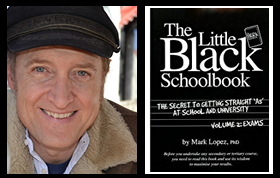Dr Mark’s The Meaning in a Nutshell
Philip Noyce (director) Christine Olsen (screenwriter), Rabbit-Proof Fence (2002)
The film Rabbit-Proof Fence (2002) was directed by Phillip Noyce and written by Christine Olsen who was inspired by the memoir about Molly Craig Follow the Rabbit-Proof Fence written by Molly’s daughter Doris Pilkington Garimara (1996). The film seeks to use cinema to convincingly establish as true the story of the ‘stolen generations’. This is the historical argument that mostly half-caste and some Aboriginal children had been forcibly removed from their Aboriginal families, between approximately 1910 and 1970, for racist reasons, to raise them as ‘whites’, denying them access to their Indigenous culture and families as part of a program of ‘genocide’ intended to bring about the dissolution and demise of the Australian Aborigines as a distinct race of people.
The policies associated with the ‘stolen generations’ are presented as unjust and as the cause of great unnecessary suffering that would warrant official apologies, compensation and family reunification.
While the film focuses on the trauma of forced child removal and the need to reunify divided families as being at the heart of this injustice, it also deals with many other issues and injustices raised by the ground-breaking historical essay by Peter Read The Stolen Generations (1981) and in the detailed report by the Human Rights and Equal Opportunity Commission Bringing them Home (1997), such as the oppression and denial of rights inflicted on many Aborigines during this period.
The film is also to be read as a celebration of survival, both of the girls (Molly, Daisy and Gracie) who are at the centre of the narrative, and of the Aboriginal people in general who have survived generations of oppression after what the film calls the ‘invasion of their lands by white settlers’. The film also celebrates the enduring bonds in Aboriginal families, especially between mothers and their children. The film depicts the girls who were forcibly removed from their families as, above all, wanting to be home with their loving mothers and in the ancestral land of their people. In this respect their desires regarding the importance of home, homeland and family are meant to represent the desires of most Aboriginal people that should be respected by white Australians.
Set in Western Australia in 1931, the film blames as the principal culprit the Chief Protector of the Aborigines Mr A. O. Neville, who is presented as a racist paternalistic bureaucrat with comprehensive powers over the lives of the Aborigines and genocidal aims to breed out the colour of the natives until they are indistinguishable from whites. The film also blames the police, the major churches and some white philanthropists for their direct involvement, and blames the white population in general for aiding the authorities, either by directly supporting or contributing to the atrocities or for standing by and allowing this to happen.
Student resources by Dr Mark Lopez
© Mark Lopez 2019 All RIGHTS RESERVED
The purpose of the concise notes of Dr Mark’s The Meaning in a Nutshell is to provide much needed help to students seeking to unlock the meaning of the texts with which they have to deal. (More elaborate notes are provided in lessons as part of my private tutoring business.)
Subject: Rabbit-Proof Fence meaning, Rabbit-Proof Fence themes, Rabbit-Proof Fence analysis, Rabbit-Proof Fence notes
